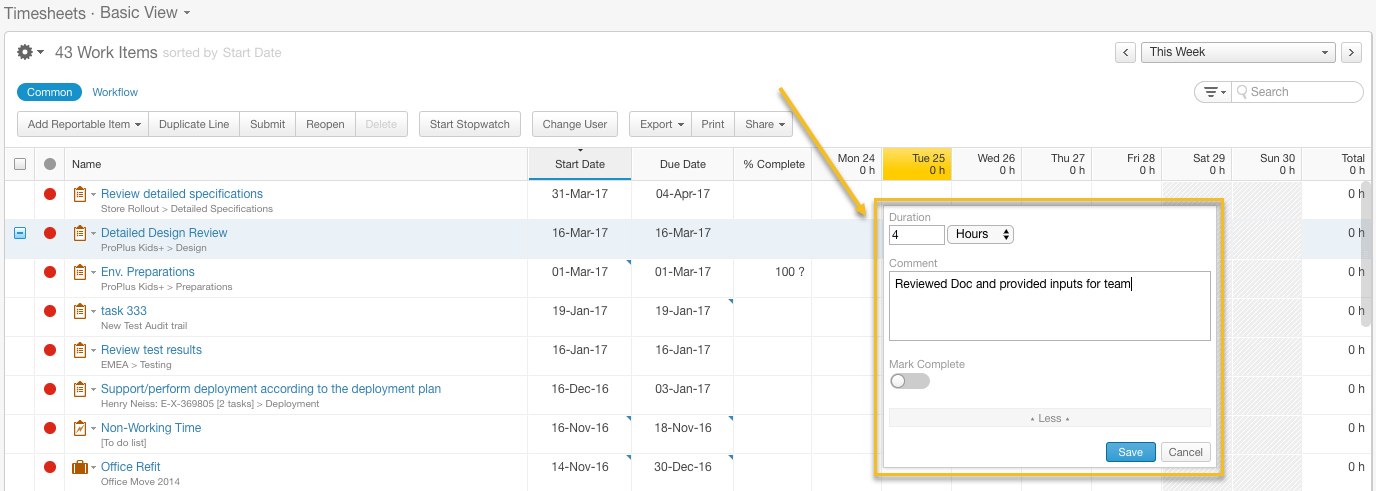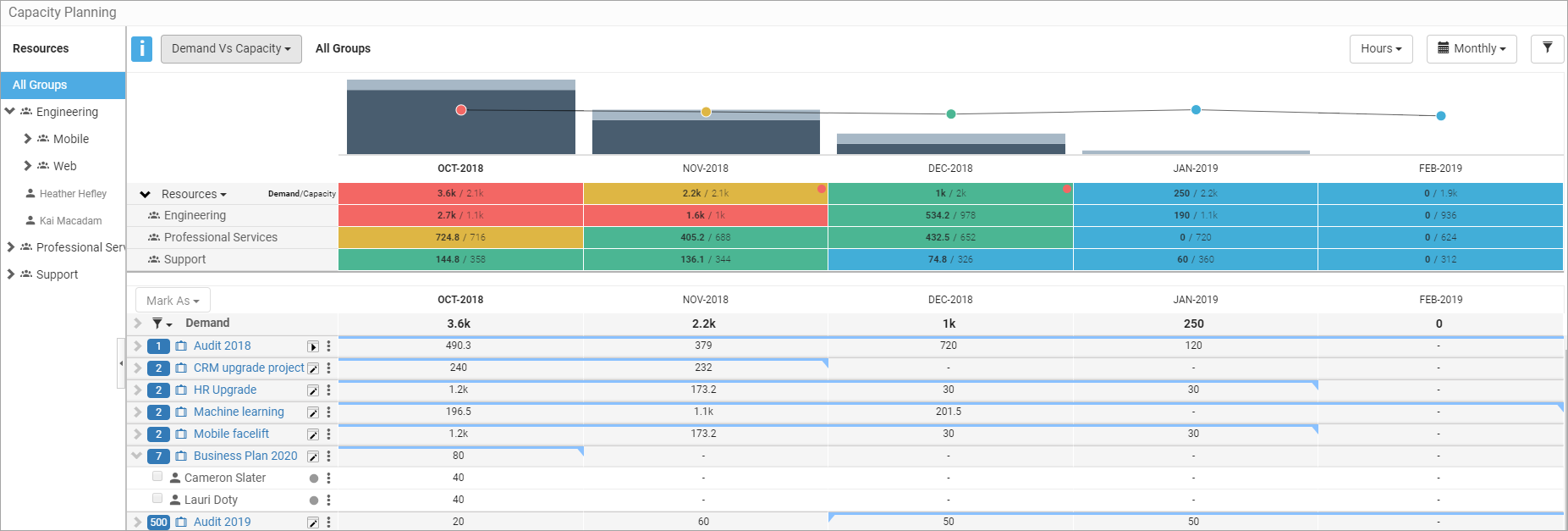Change is the only constant in business—and in project management, it moves at lightning speed.
Today, timelines can shrink, scopes can change, needs and demands can shift unpredictably, and risk factors can arise without warning. Project teams have no choice but to remain agile and adapt to the ever-evolving requirements of unpredictable, dynamic, and uncertain environments.
Adaptation is Key to Project Management Success—But What's Holding Teams Back?
Integrating adaptability into project management allows companies to respond quickly, confidently, and flexibly to change. Adaptive project management embraces change and uncertainty and uses flexible planning, continuous value delivery, iterative development, and cross-functional collaborations to achieve strong project outcomes.
And yet, most enterprises still fall short—no, strike that—they have yet to leverage the adaptive approach to project management.
Courtesy: Legacy project management tools that lack functionality and adaptability.
Agile or adaptive, every modern project management approach demands speed, collaboration, and responsiveness. Yet, most traditional tools fail to deliver. In fact, they don't just lag; they can actively hold teams back and even sabotage current progress—no matter how solid the strategy or how dedicated the team is.
Does this sound like your project team? If so, we are here to help. Let's start by discussing the most common challenges project teams face.
And if you're not facing them yet, trust me—they're coming.
Common Project Management Challenges: Why Do Teams Struggle?
Continuous planning, iterative development, seamless data access, cross-functional communications, and flexible resource allocation are all core tenets of adaptive project management, but gaps, inefficiencies, and limitations of traditional project management tools often sabotage them.
Challenges can creep in from every corner, whether it's workflow disruption, rigid capacity planning, fragmented communication, or poor resource allocation.
Inefficient Task Management That Disrupts Workflows:
Overly complicated task management tools often create more confusion than clarity. Most systems fail to adapt to individual work styles, leaving teams to work around rigid structures. Integration issues add to the chaos; tasks that don't sync with calendars or emails lead to missed deadlines and dropped responsibilities. When the tools don't fit, teams spend more time grappling with the system than completing the work.
Inaccuracies and Delays in Time Tracking:
Accurate time tracking is essential for billable projects, but manual logging is often inefficient and prone to errors. Non-automated tools further hinder accuracy, while inconsistent usage and precision among team members compromise data reliability. Finally, a lack of integration between time tracking and invoicing systems can delay billing and impact cash flow.
Poor Resource Allocation Overburdening Teams
Getting the right people on the right tasks sounds logical but often challenging. Outdated or inaccurate skill mapping leads to poor assignments, while high-demand employees get overbooked and burn out.
Meanwhile, underutilized team members remain idle. Smaller teams face an even more challenging road with limited access to specialized skills. Tools must provide clear visibility and flexibility to bridge these gaps, but too often, they fall short.
Rigid Capacity Planning Hindering Flexibility
Capacity planning relies on good data, but unreliable or outdated information can derail even the best-laid plans. Many tools don't allow for testing multiple "what-if" scenarios, leaving teams ill-prepared for changes. Worse, overly complex interfaces make it nearly impossible for non-technical users to engage with the planning process. Together, these issues create misaligned expectations, delays, and inefficiencies that could have been easily avoided with the right functionalities.
Fragmented Communication Reducing Efficiency:
Without seamless communication, collaboration breaks down. Teams often struggle with fragmented conversations spread across emails, chat tools, and in-tool discussions, which makes finding key information difficult.
Excessive notifications can overwhelm team members, leading to disengagement. Worse yet, tools that don't integrate naturally into existing workflows see low adoption and leave teams stuck in a cycle of inefficiency.
Complex Gantt Charts and Work Breakdown Structures
Gantt charts and Work Breakdown Structures (WBS) come with a steep learning curve. And as projects grow more complex, charts can become cluttered and hard to interpret due to data overload.
In dynamic environments, managing interdependencies becomes challenging. When tools lack instant updates, distributed teams working concurrently may become out of sync. Gantt charts and Work Breakdown Structures (WBS) are powerful tools, but they also have their own challenges.
File Management Issues That Impact Accessibility and Control:
File management should be seamless, but common obstacles like storage limitations, poor integration, and file duplication often hinder efficiency. Multiple file versions create confusion, and ineffective search functions slow down workflows by making it difficult to locate necessary information. Without robust file management capabilities and seamless integration with broader systems, productivity suffers.
But a goal without a plan or the tools to achieve it is merely a wish
The ultimate goal of any project management team is to deliver value faster, drive collaboration, and adapt seamlessly to changing priorities without sacrificing quality or efficiency. However, if you don't have a plan or the right tools to execute it, your goal is just a wish.
Fortunately, with Planview Adaptive Work, project management challenges are not just solved but prevented altogether.
By providing all the functionality, speed, and flexibility required, Planview Adaptive Work brings together powerful modules that work harmoniously to enable project management teams to embrace adaptive project management fully. Let's find out how:
Overcoming Common Project Management Challenges with Planview AdaptiveWork
Planview AdaptiveWork addresses the common challenges project teams face by offering a suite of integrated features:
My Work Module: Easy Task Tracking for Seamless Coordination
The My Work module in Planview simplifies task tracking so all team members stay aligned and productive. Here's how:
- Streamlined Interfaces: With an intuitive, decluttered design, this module eliminates confusion and allows users to focus on what's most important—their tasks.
- Personalized Workflows: It powers users to tailor their task views to match their unique roles and preferences to improve both engagement and productivity
- Real-Time Task Updates: With instant syncing across systems, team members never miss a beat, even in dynamic project environments.

Planview also offers mobile app integration, which ensures task tracking isn't confined to the desktop. This allows team members to manage tasks on the go.
Timesheets Module: Simplified Time Reporting on Billable Projects
Time tracking often feels like a burden for teams, but Planview's Timesheets module makes it seamless and precise:
- Automated Time Entries: With options for integrating time tracking into tools like Microsoft Teams and Slack, manual logging becomes a thing of the past.
- Billable vs. Non-Billable Clarity: Team members can easily differentiate between tasks for streamlined invoicing and improved accuracy.
- Approval Workflows: Simplified approval processes reduce delays and ensure time entries are quickly verified.

Features like utilization trend analysis further help managers monitor and optimize resource use to ensure that no effort goes unnoticed.
Skill-Based Resource Pools for Optimized Talent Utilization
Assigning the right people to the right tasks is critical. With skill-based resource pools, Planview AdaptiveWork makes it even simpler.
- Centralized Skill Mapping: Track employees' expertise and match them to relevant projects without delays.
- Dynamic Updates: The system automatically reflects these changes as employees develop new skills to ensure accurate resource allocation.
- Load Balancing: Avoid overbooking skilled resources by leveraging real-time availability data.

Planview offers 'rate card integration,' further adding financial transparency by linking skill assignments with billing clarity.
Accurate Capacity Planning for Clear Insights & Better Decisions:
Effective capacity planning requires accurate data and flexibility. Planview's capacity planning tools address these challenges head-on:
- Demand vs. Availability Views: Gain a holistic picture of team capacity to align resource allocation with project demands.
- Scenario Analysis: Test multiple "what-if" scenarios to prepare for unexpected shifts in workload or project scope.
- Real-Time Updates: The system integrates live data, reducing forecasting errors and ensuring plans are always actionable.

Interactive Gantt Charts and Work Breakdown Structure: Simplified Project Visualization
Complex projects often become overwhelming without precise visualization tools. Planview's Gantt charts and work breakdown structures (WBS) keep everything organized:
- Prebuilt Templates: Save time by using customizable templates to establish timelines, milestones, and dependencies quickly.
- Collaboration-Friendly: Real-time updates ensure distributed teams can work in sync, even across time zones.

In addition, the drag-and-drop interface of Gantt charts allows for effortless adjustments, making them more user-friendly even for beginners.
Unified Communication with Built-In Discussions for Better Collaboration
Scattered communication can derail progress. With built-in discussions, teams have a central hub for project-related conversations:
- In-Context Messaging: Keep discussions tied to specific tasks or projects to cut down the noise from unrelated communications.
- Notification Management: Adjustable settings ensure users receive only relevant updates for minimized distractions.
- Collaborator Access: External stakeholders can participate without extensive onboarding or training.
In addition, the seamless integration with external collaboration tools ensures discussions remain centralized while also syncing with popular platforms like Slack or email.
Planview AdaptiveWork is more than just a project management solution; it's a powerhouse designed to thrive in today's unpredictable, complex, and fast-changing world. Rated as a leader in Adaptive Project Management by Gartner, Planview AdaptiveWork equips organizations to navigate the shifting demands of modern projects with precision and agility.
But let's not forget: Adaptive Project Management isn't a "set it and forget it" approach. It's an ongoing practice of assessing, adjusting, and improving. There is no plug-and-play solution that can instantly produce results.
So, while Planview AdaptiveWork provides the tools, functionality, and framework to support this, success depends on how well the solution is implemented.
This brings us back to our truth pill: a goal without a plan—or the right tools to execute it—is just wishful thinking.
You've got the tools with Planview AdaptiveWork, but you need a thoughtful implementation strategy to maximize their impact. That's where Winmill PPM steps in.
Winmill: North America's Leading Implementation Experts in Planview AdaptiveWork
As North America's leading PPM (Project Portfolio Management) implementation service provider, Winmill combines expertise, strategy, and flawless execution to help businesses unlock their full potential with Planview AdaptiveWork.
Our approach is straightforward yet powerful: we align the right people, processes, and plans with the right tools to deliver exceptional outcomes.
More than just PPM implementation experts, we're trusted partners committed to your success. With our proven track record of world-class customer service and support, we help enterprises consistently achieve strong project outcomes—no matter how complex the challenge.
Change is inevitable—it never stops in Project Management. But Planview's AdaptiveWork helps you respond with flexibility and confidence to deliver consistent, incremental results.
With Winmill's expertise, you can fully harness the power of Planview AdaptiveWork to position your company for lasting success in an ever-evolving world.
Are you ready to position your PMO for long-term success with Planview AdaptiveWork? Let's make it happen together. Contact us at Winmill here.

